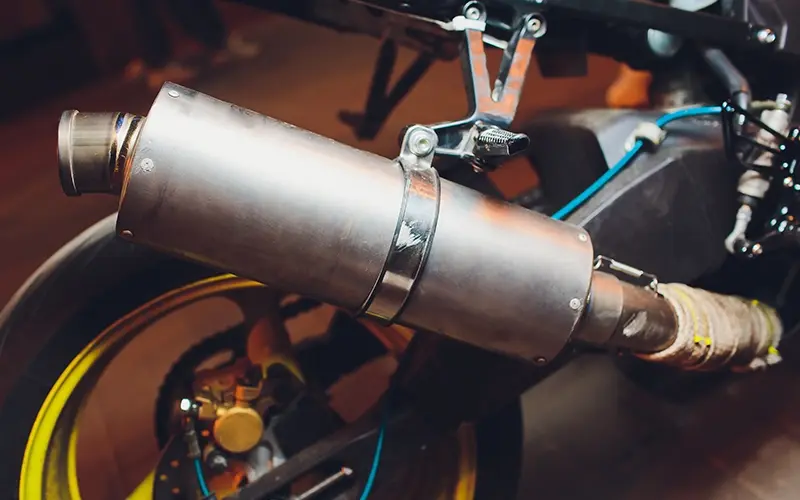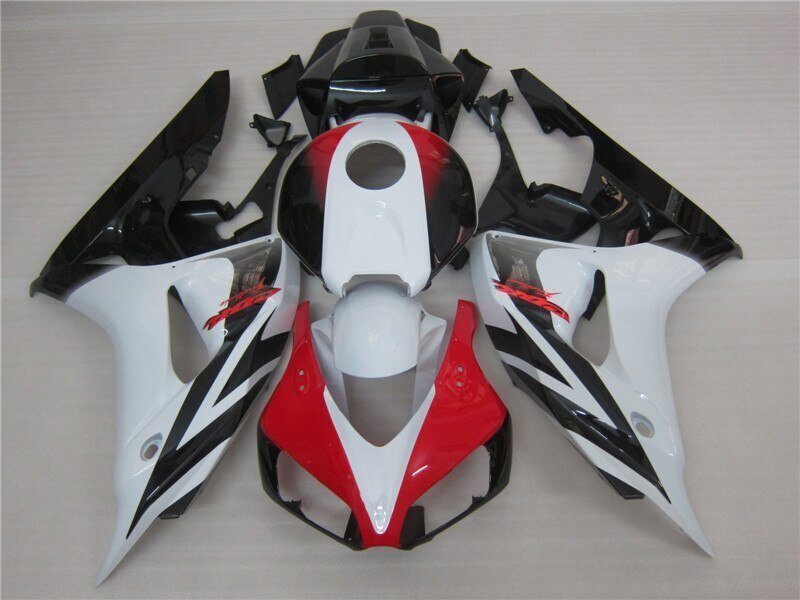There’s nothing quite like the sound of a roaring motorcycle engine as you hit the open road. But what if your bike starts sounding off, almost like it’s coughing or sputtering? A loud, unsettling noise might be a sign of something more serious — an exhaust leak. While it may not seem like an urgent issue at first, an exhaust leak can impact your bike’s performance, fuel efficiency, and even your safety.
Thankfully, diagnosing and fixing a motorcycle exhaust leak isn’t as complicated as it might seem. In this guide, we’ll walk you through the process to ensure your bike is running smoothly and your ride remains as exhilarating as ever.
What Causes Motorcycle Exhaust Leaks?

Before jumping into the fix, let’s take a moment to understand what causes exhaust leaks in the first place. Your motorcycle’s exhaust system is a vital component designed to direct harmful gases away from the engine and out of the bike. Over time, the exhaust pipes, seals, and gaskets can wear out or become damaged, causing leaks. There are several potential causes of motorcycle exhaust leaks, including:
- Cracked or Rusted Exhaust Pipes: Age and exposure to the elements can cause pipes to crack or corrode.
- Loose or Worn-Out Clamps: The clamps holding your exhaust system together can loosen over time.
- Faulty Gaskets: The seals between parts of the exhaust system can break down due to heat and pressure.
- Improper Installation: If the exhaust system was not correctly installed, leaks can develop at connection points.
Identifying the root cause of the leak is crucial for ensuring a proper fix.
Step 1: Identifying the Exhaust Leak
The first step in fixing an exhaust leak is diagnosing where the leak is coming from. If your bike is making a strange noise, such as a hissing or popping sound, it’s a sign that there’s a leak somewhere in the system. But how do you pinpoint the exact location?
Start by inspecting your exhaust pipes visually. Look for any cracks, rust spots, or visible damage. Often, the leak will occur near the exhaust joints, where parts of the system connect. These are the most common places for leaks, especially around gaskets and seals.
If the leak isn’t immediately obvious, you can try the “soapy water test.” While the engine is running and the exhaust is hot (but not dangerously so), spray soapy water over the exhaust system. The bubbles will form at the location of the leak, helping you pinpoint the problem area.
Another method is to use your senses. A strong smell of exhaust fumes or an unusual sound when revving the engine can be signs of a leak. If you’re having trouble detecting the leak visually, try listening closely to different parts of the exhaust while the engine is running. A steady hissing sound could be an indication that air is escaping from a cracked pipe or loose joint.
Step 2: Gathering the Necessary Tools
Once you’ve identified the source of the leak, you’ll need a few basic tools to fix it. These tools typically include:
- Wrenches or socket set
- Replacement gaskets or exhaust seals
- Exhaust clamp or fastener (if needed)
- Exhaust sealant or high-temperature silicone (optional)
- Cleaning supplies (rags, degreaser)
- Safety gloves and eye protection
Having all your tools ready before starting the repair will make the process more efficient and help avoid unnecessary delays.
Step 3: Fixing the Leak
Now that you’ve located the leak and gathered your tools, it’s time to make the fix. The repair process will vary depending on the type of leak you have, but there are a few common fixes for most exhaust leaks.
Tightening Loose Clamps
If the leak is due to a loose exhaust clamp or fastener, tightening it is usually the simplest solution. Use a wrench or socket set to tighten the bolts securing the exhaust pipe and other components. Be careful not to overtighten, as this can damage the threads or cause other parts to misalign.
Replacing Faulty Gaskets or Seals
If the leak is caused by a damaged gasket or seal, you’ll need to replace it. First, remove the old gasket by loosening the bolts or screws holding the exhaust pipe in place. Clean the mating surfaces of the exhaust components to remove any oil, dirt, or debris. Then, place the new gasket in position, ensuring it’s properly aligned with the exhaust pipe.
When installing the new gasket, make sure it fits snugly in place, and then reattach the exhaust components. Tighten the bolts evenly, using a crisscross pattern to ensure a secure seal.
Sealing Small Cracks
In some cases, small cracks in the exhaust pipes can be sealed with high-temperature silicone or exhaust sealant. This is a temporary fix that can help prevent further leaks. Apply the sealant over the crack, ensuring it covers the entire area. Allow it to cure according to the manufacturer’s instructions before starting the engine.
Replacing Exhaust Pipes or Joints
If the exhaust pipes themselves are cracked or rusted beyond repair, you may need to replace them entirely. This is a more involved fix that may require removing the old pipes and installing new ones. If you’re not comfortable with this level of repair, it’s best to consult a professional mechanic.
Step 4: Testing the Repair
Once you’ve completed the repair, it’s time to test your work. Start the engine and listen for any unusual sounds. If the hissing or popping noise has stopped, your repair was successful. You can also perform the soapy water test again to check for any remaining leaks. If everything looks good, take your motorcycle for a short test ride to ensure the exhaust system is functioning properly.
Conclusion: Ride Smooth, Ride Safe
Exhaust leaks may seem like a minor issue, but they can significantly affect your bike’s performance and efficiency if left unaddressed. Diagnosing and fixing an exhaust leak on your motorcycle is a manageable task, as long as you know where to look and what tools to use. By following these steps, you can restore your bike’s exhaust system to its optimal condition and enjoy a smoother, safer ride.
Remember, regular maintenance and inspections are key to preventing exhaust leaks in the future. Keep an ear out for strange noises and check your exhaust system periodically. A little attention now can save you time, money, and headaches down the road.










